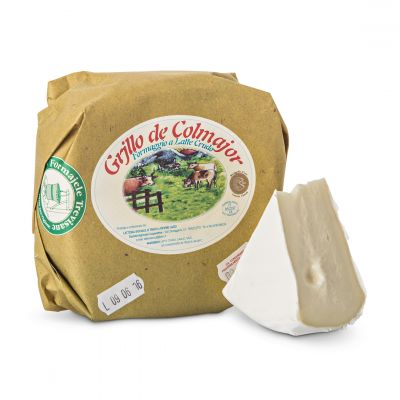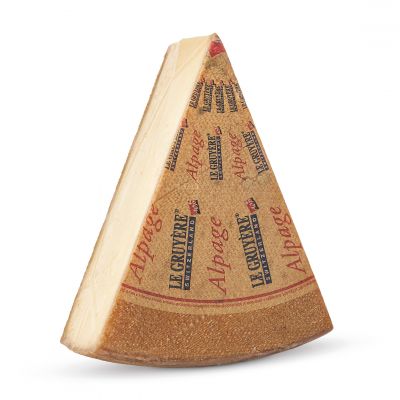How to create the selection? What’s the best serving moment? How to present it? Here you have a little guide to compose a cheese plate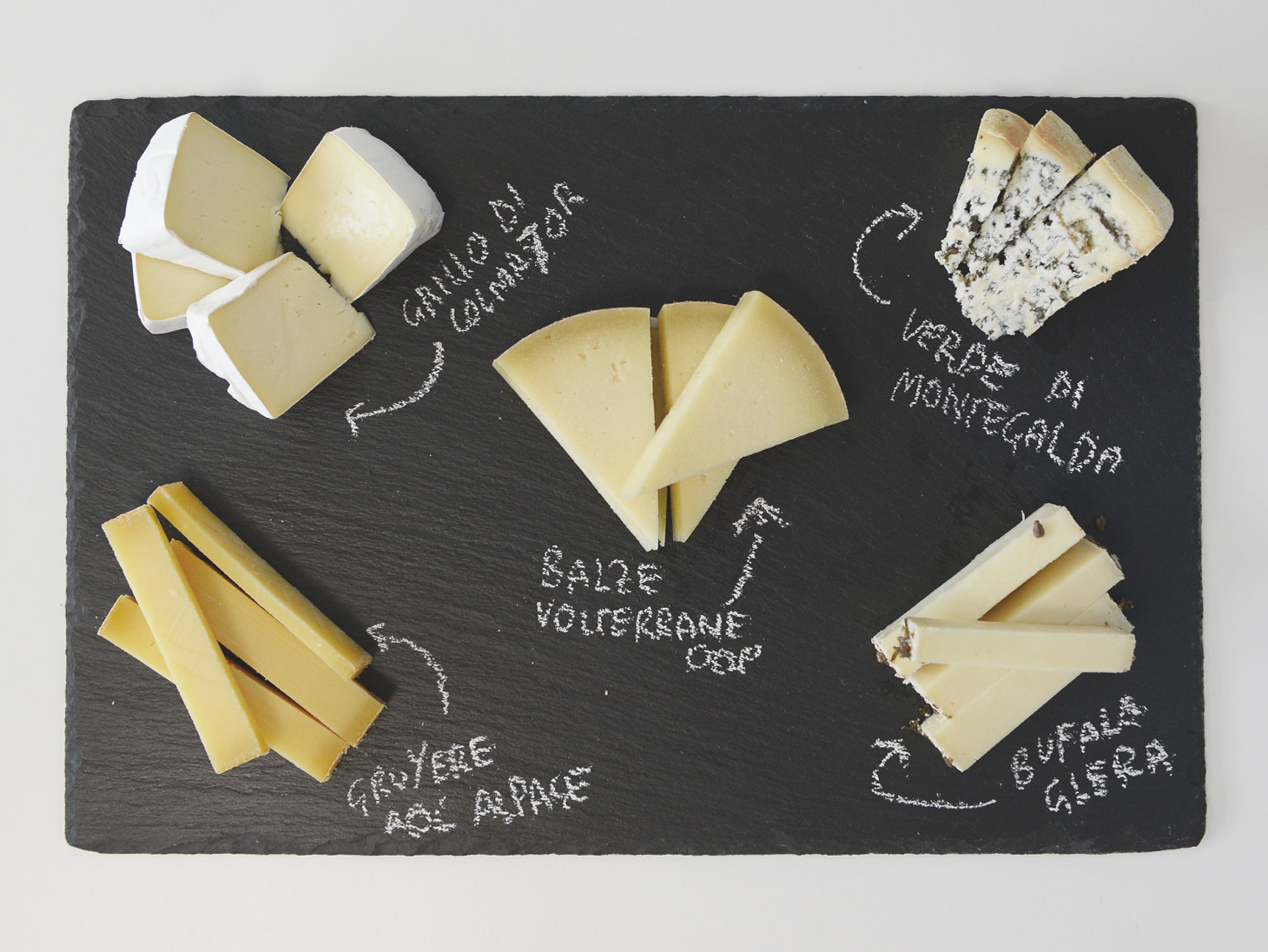
For cheese lovers, as we are, every moment could be good to prepare a cheese plate and then fully enjoy it!
Probably I exagerate (or maybe not), but the truth is that a cheeseboard is a great solution for different occasions: perfect as aperitif or starter, but also a main dish, a pre-dessert or a dessert.
So this flexibility and capability of being useful in any part of a meal make the cheese on itself a unique and versatile tool.
Obviously we should use this opportunity in the right way, being able to create well balanced tastings for our guests and giving to our composition the level of importance demanded by the course and serving moment.
Hence you’ll find here some advices which could be useful either if you are called to prepare a cheese board in your place or if you are asked to give some suggestions by your clients.
1 | WHEN?
As we said already, the moment the cheeseboard is prepared for gives the first direction.
It’s very easy, you only have to step into client shoes: if you get a request of a cheese proposition as starter the objective would be to propose something that tease the appetite. So portions will be limited, maximum 4 pieces of 15 g each.
At the contrary you’ll prepare 6/8 bites of 30 g each if you are called to prepare a main course.
A different impact on your stomach! Here becomes easier to create a gastronomic experience, like a ideal trip that touch different stages and suggest also combinations with other ingredients or drinks.
In the case the cheese plate constitutes a pre-dessert it will have the role of concluding the salty part of the menu and prepare the palate for the sweet final. The single portions (max 3) come back to 15 g each.
And what about a dessert where cheeses are protagonist and could be the last flavour the clients bring in his mouth? Intense and thick taste profiles are welcome, for the size of the portion refer to the standard of a starter.
Anything we forgot? Oh yes, our lovely aperitif, which became lately a sort of light dinner! Then again cheese could be the protagonist and we can really create plates rich of products, charcuterie is welcome too!
2 | WHICH CHEESES?
The topic is huge, but the previous paragrapher gives a reading key: if we can afford intense and savoury cheeses during happy hour and main course serving, then we have to slow down for a starter where the cheese should be soft and lactic.
It’s not helpful to push too much in a pre-dessert too, where a fatty cheeses could limitate the appreciation of the next course. Needlees to say that during a dessert you can really overpass the limits and conclude the meal with a “wow” effect!
Despite the serving moment we always recommend to follow a sort of fil-rouge that bound all the cheeses in the selection.
It could be a geographical link focusing on a specific region or nation, or a overtour on raw milk cheese, or alpages or a variation of the same cheese with different affinage.
That creates a story and it will be easier for you to choose the products.
It is beneficial to be aware of cheese seasonality either to take advantage of that or prevent any interruption in availability.
For example the goat’s milking cycle gives cheeses from February to October, then in winter do not struggle to find fresh goat cheeses. Or again proposing a washed rind plate in summer... your clients might not appreciate it. Anyway try to chase armony and you can only do a good proposition.
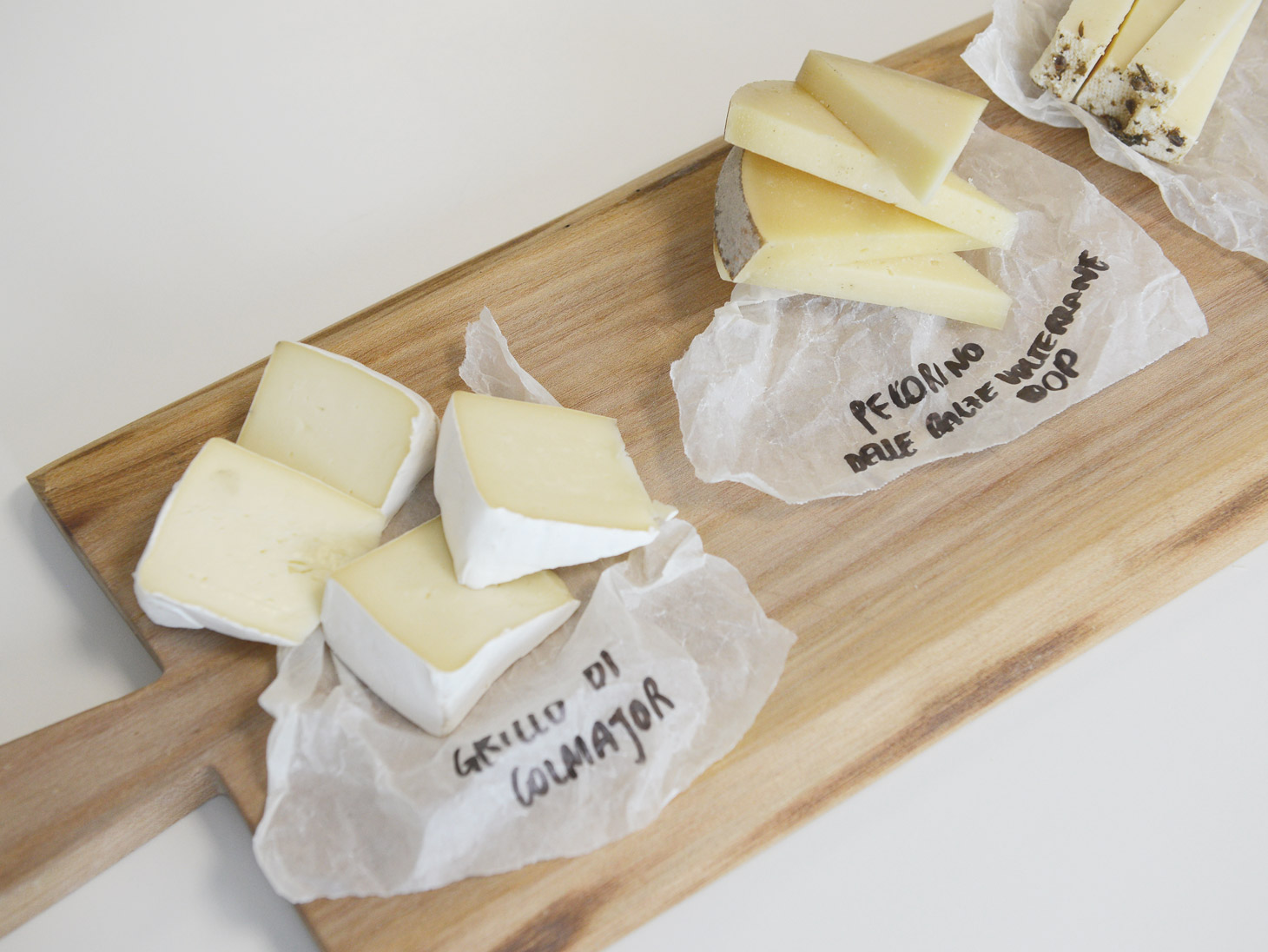
3 | PRESENTATION
A cheeseboard is a trip in the dairy world.
We then suggest to provide your clients with all the necessary information to full enjoy the experience: names, type of milk, heat treatment, origin and maturation are details you should always put in evidence. Client is eager to know more!
Moreover it’s extremely important to determine which cheese is the first on the sequence and which is the sense of degustation: first are coming delicate profile and then up to the more persistent and intense.
Finalize your plate with aesthetic touches, eyes always want their part and sight is the first sense you need to persuade.
Also the support where you’ll put cheeses should be well considered and good enough to stand out cheeses. If you like you can add next to cheeses any ingredient you’ll consider good to combine.
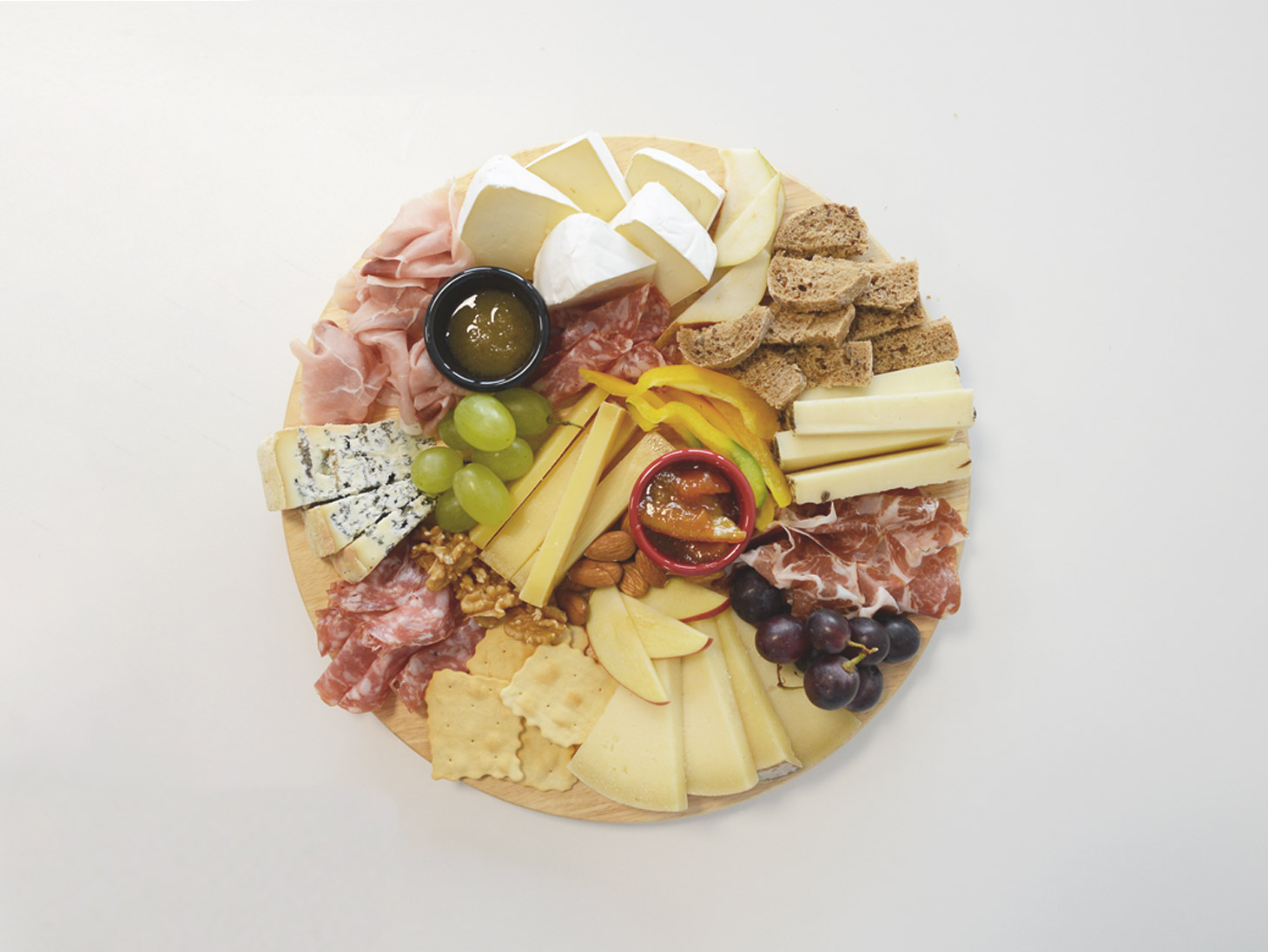
4 | PAIRINGS
If you like the idea of pairing cheese with other ingredients be careful!
Combinations should be well tested, infact they could be fullfilling, but also could completely above the lines. Honey, jam, mostarda are the most classic pairings, but also vegetables, fruit, nuts could be funny.
We suggest to well position the ingredients next to the cheese you have correspondly thought. If you like, you can enrich the plate also with a nice cold cuts selection.
Do you want to be more original? Play with drinks, the new fronteer in pairings we explored last year: wines, tea, beers, cocktail, spirits. In the case you are well prepared on the matter, think about it!
Despite the product you put next to a cheese you are called to follow the main rules anyway. Elements should enhance one each other. Balance is the target, either through harmony or contrast of tastes.
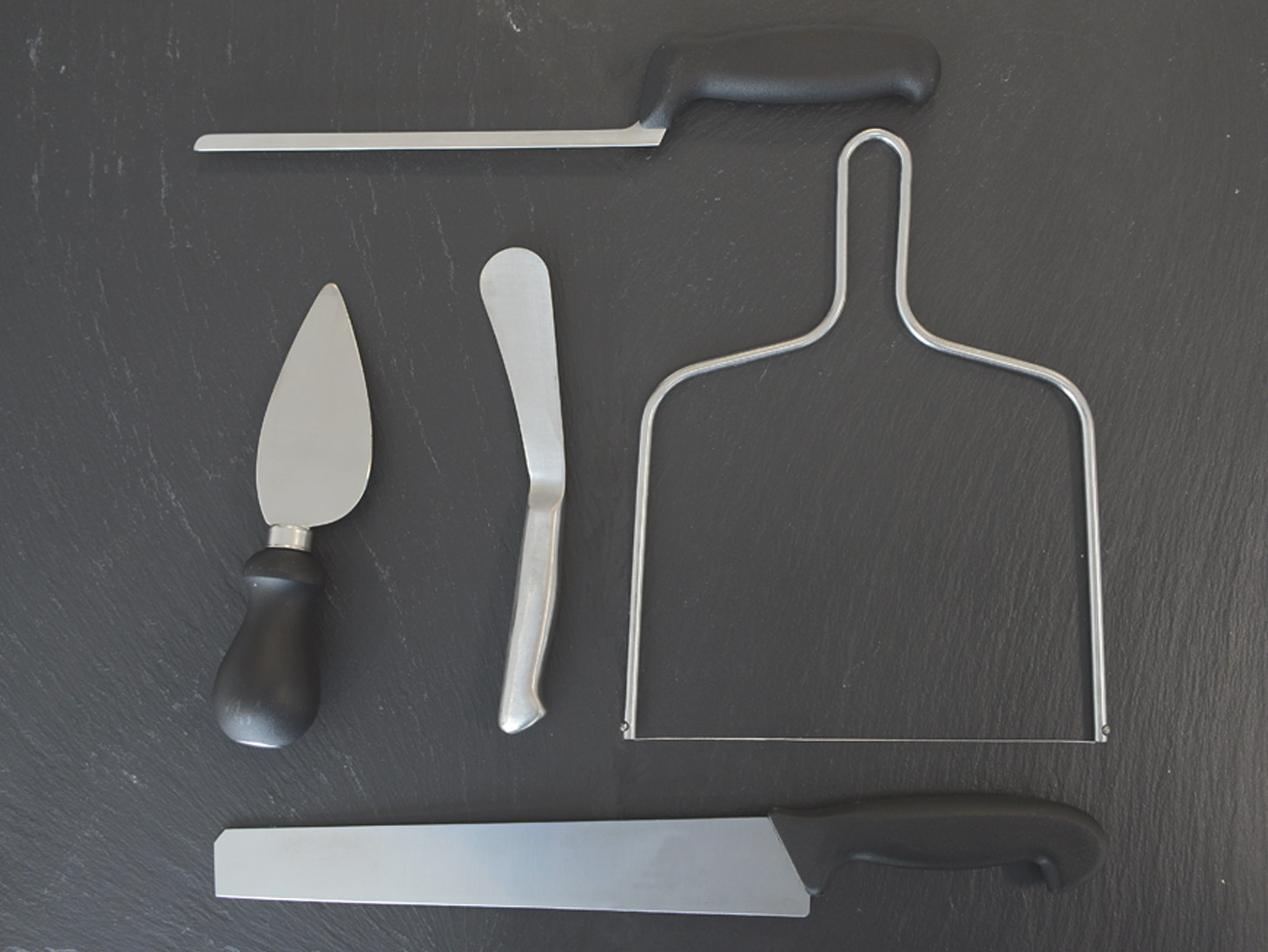
5 | SERVICE
Needless to say it’s very important to serve cheese at room temperature, otherwise they could not express their full bouquet of flavours.
If our cheese is vacuum packed then let it breathe at least 30 minutes before the cutting.
Cheese bites should be cut few minutes before the service if possible, otherwise make sure the cheese is protected from oxidation and drying.
In that case use cling film. You can also consider to put portions again in the fridge if you need to prepare a big number of plate.
Cheese-cutting is a discipline and as every discipline has rules. As you know every cheese has its proper texture and crust, then texture its not homogeneous in the mass.
So the biggest efforts is to guarantee to any guest a portion that represent all the significant part of the cheese.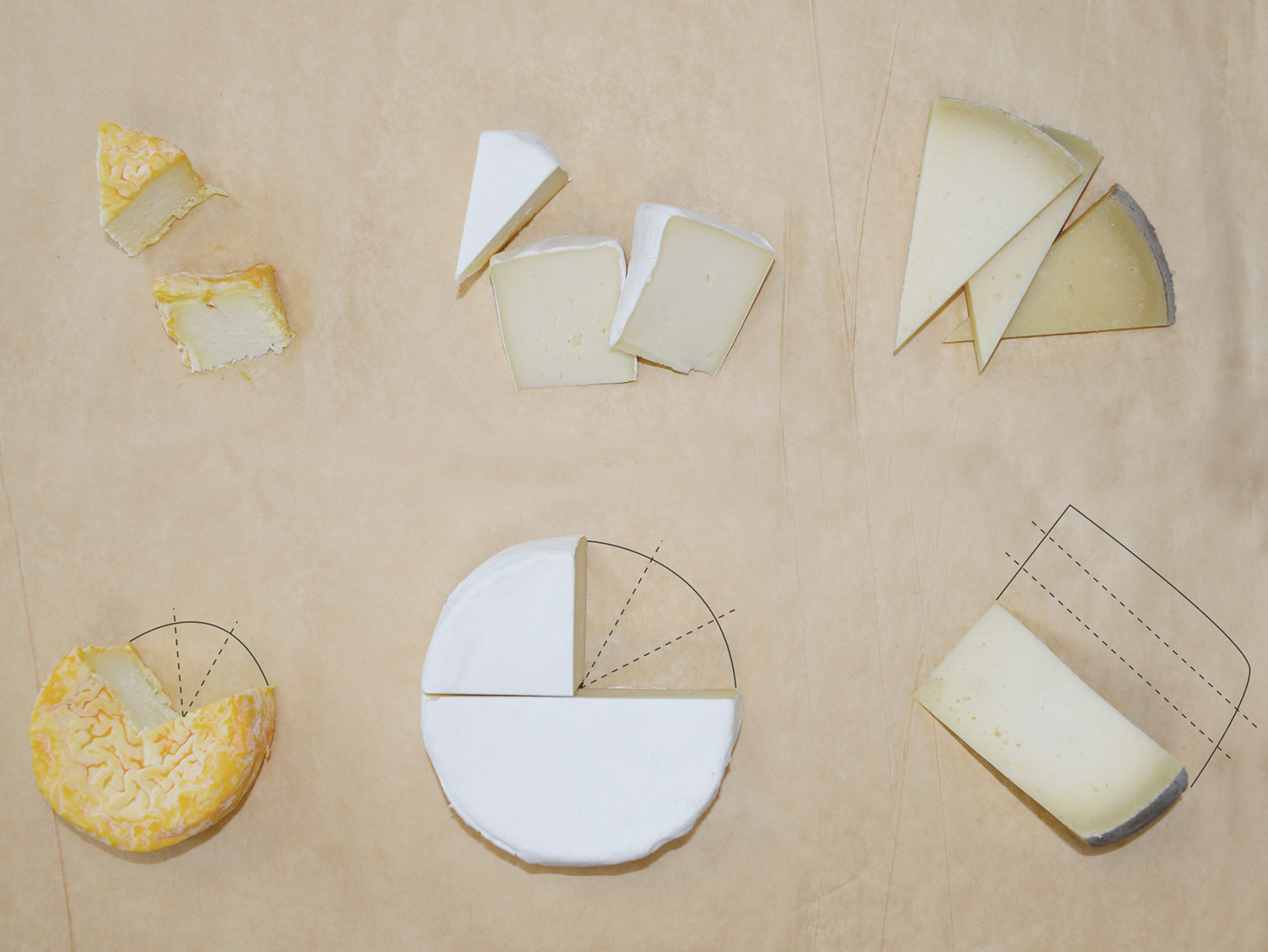
Cutting styles and knives change according to the type of cheese: soft and creamy texture wants a thin blade, or a spoon or a spatula.
Fresh goats or similar with a slightly consistent paste should be cut in wedges with the wire or a knife with a very thin blade.
For a classic round wheel with semi-hard or hard texture try to cut the cheese in triangles and then into stripes following the sense of width.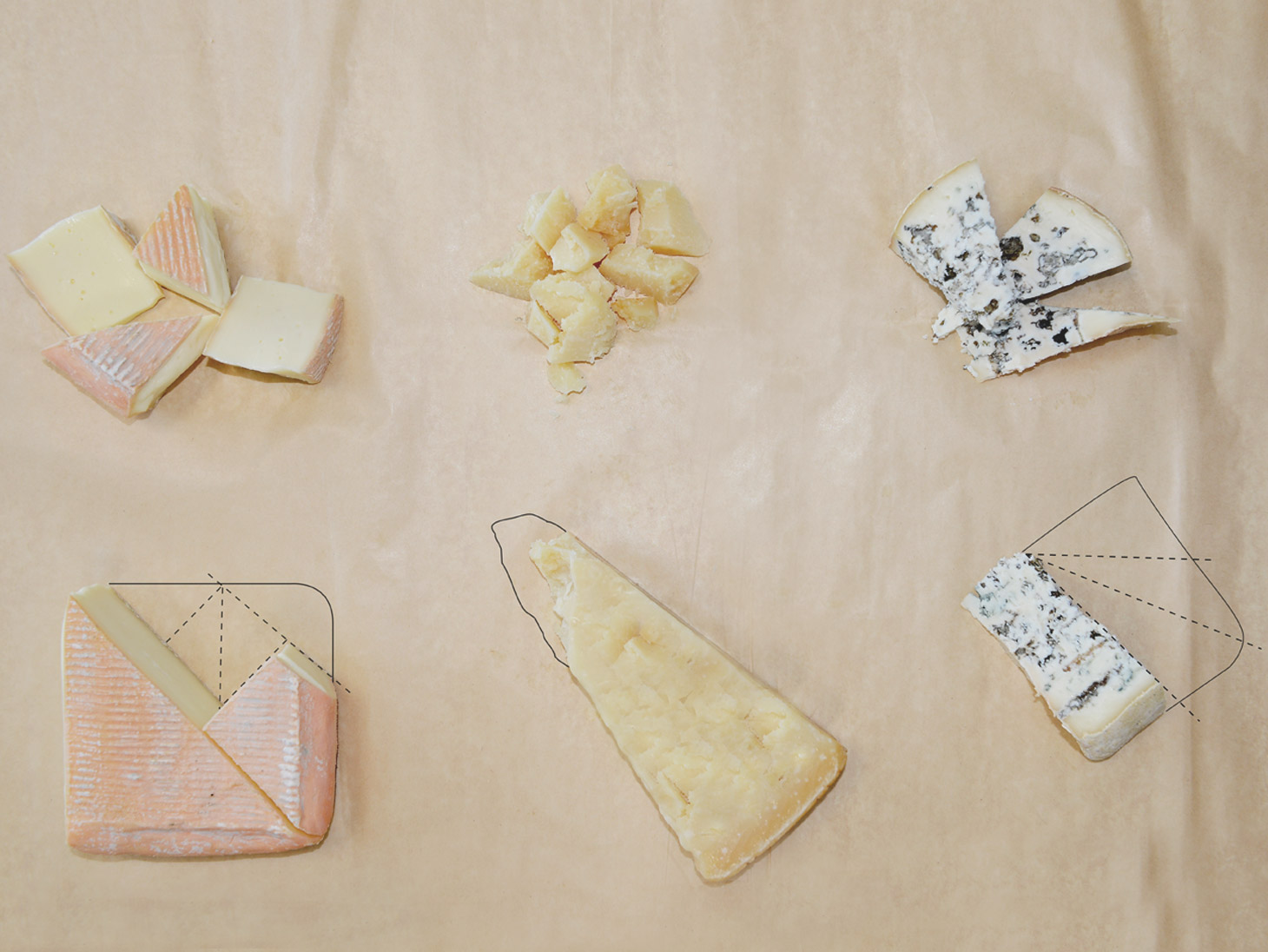
Remember to remove the crust. The same happens for hard texture blue cheeses with the only difference the knife should have again a thin blade. If the blue cheese is creamy use a spoon!
Round and bloomy rind cheese as Brie could be cut with a knife that has some vacuum on the blade, otherwise it will stick.
Small triangle wedges should be the single portion, remember the balance between crust and texture.
Squared size cheeses like Taleggio should be initially processed in squared quarters and then cut in triangles (see pictures) or in thin vertical slices.
Cheeses like Parmigiano or long aged are preferably served in flakes with the proper knife called “drop shape”.
AND THE CRUST?
We suggest to leave the crust so the cheese could maintain its identity. If the crust has an aggressive mould the clean it before serving.
Giulia Bassetto
Marketing e Comunicazione





